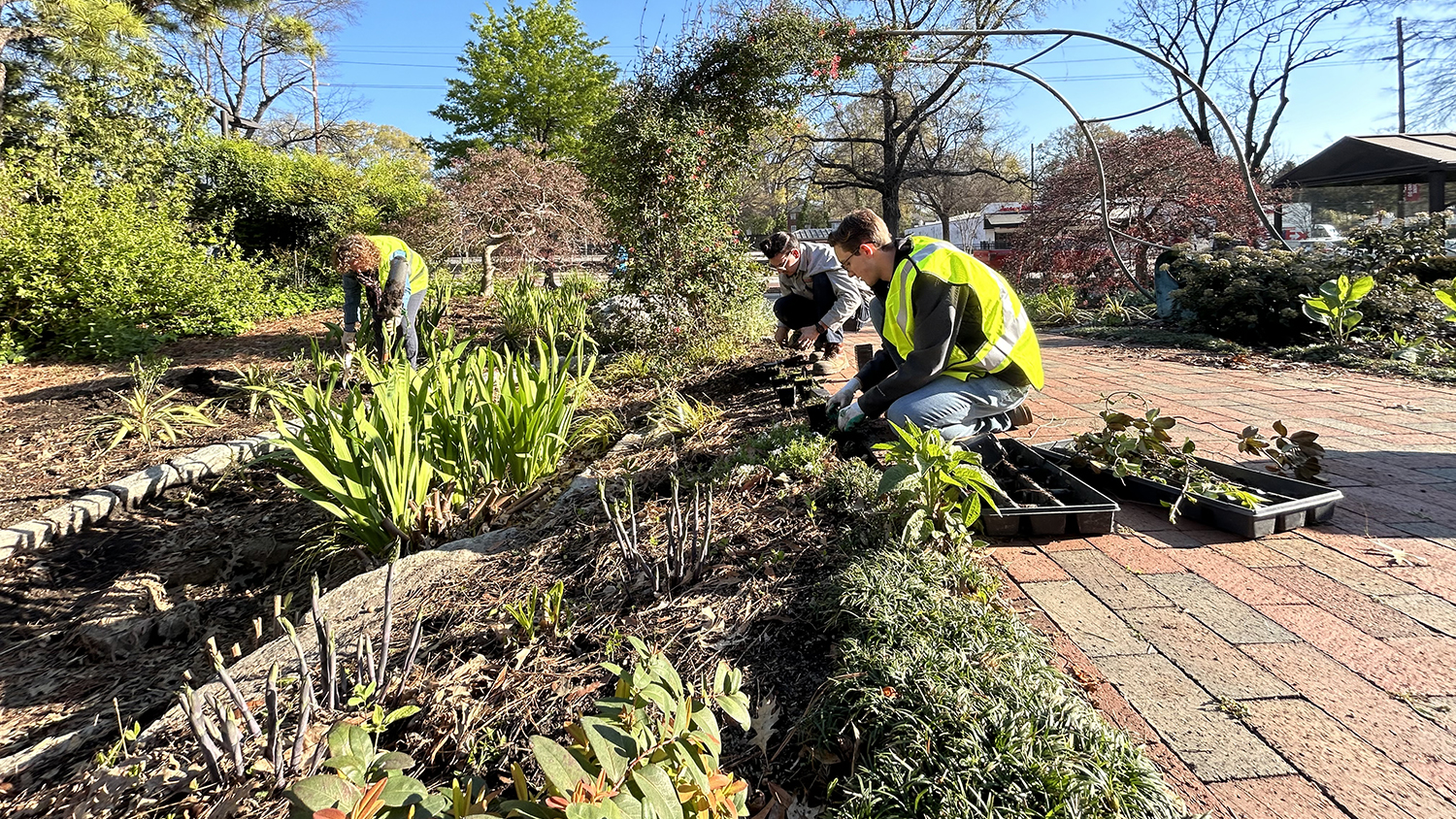Student’s research sheds light on monitoring for spotted wing drosophila
Monitoring for spotted wing drosophila (SWD) infestations is a key first step toward economical and sustainable management of the damage that the pest does to soft-skinned fruits, and finding effective ways to do that monitoring is one goal of NC State University entomology student’s research.
Since 2012, Ph.D. student Katharine Swoboda Bhattarai has been working with Dr. Hannah Burrack to learn more about the highly invasive fruit fly and where best to place traps to monitor for their presence.
Her first experiments were designed to determine if rates of infestation with SWD larvae were higher in areas closer to non-crop habitats – places like wooded areas and streams – than they were in other parts of fields at two Western North Carolina blackberry farms.
“It’s been suggested that woods and these non-crop habitats can provide Drosophila suzukii with places to hide – a refuge from management treatments. So I really wanted to get an idea of the risk posed by these areas,” Swoboda Bhattarai said. “The idea was to give growers ideas of where they should monitor. Should you monitor close to non-crop habitat? Or should you monitor in the middle of your field?”
She set up traps baited with sugar and yeast along transects that ran from wooded edges and water sources into crop fields, and then regularly examined those traps for adult insects and fruit in the fields for larvae.
While she didn’t see a correspondence among larval infestation, trap captures and distance from streams or ponds, she did when it came to wooded edges. At certain times of the season, when infestation rates were high overall, berries collected closer to a wooded edge were infested at higher rates than berries collected farther away from the woods, she said.
Based on her findings, Swoboda Bhattarai recommends that once growers find flies in traps, they should pay close attention to fruit along wooded edges if they want to monitor for larval infestations. That’s because a single fruit with larvae can cause inspectors to reject a farmer’s entire shipment, she said.
In more recent experiments, Swoboda Bhattarai has noted that despite big differences in how they reproduce, SWD behave a lot like other fruit flies when it comes to the times of day when they are most active and are likely to move in and out of fields. And that, she said, could have significant implications as she and other scientists continue their work to develop effective integrated pest management strategies
for SWD.
– Dee Shore


